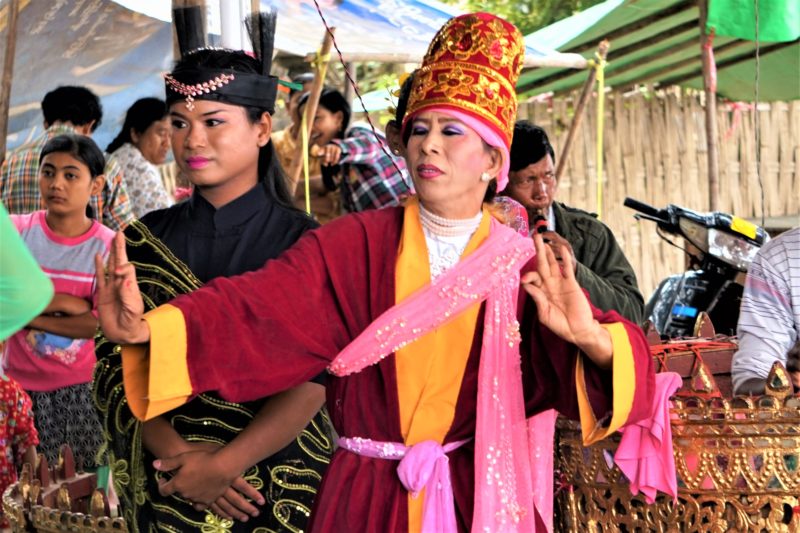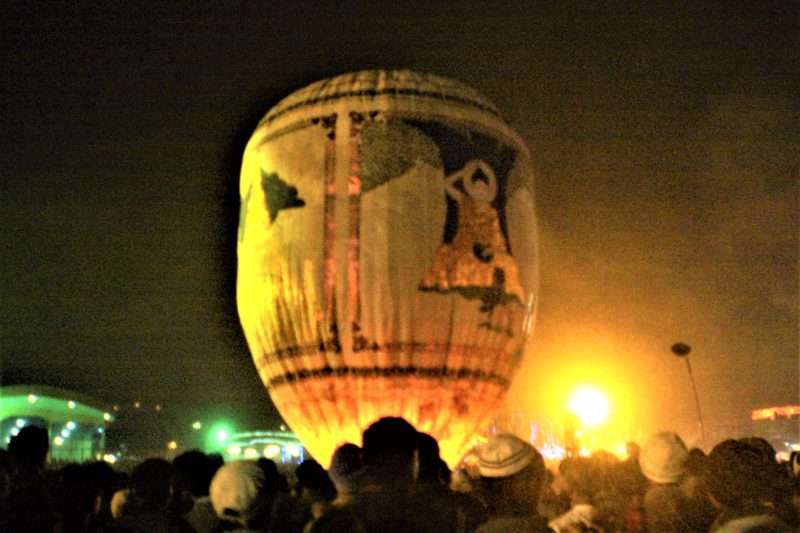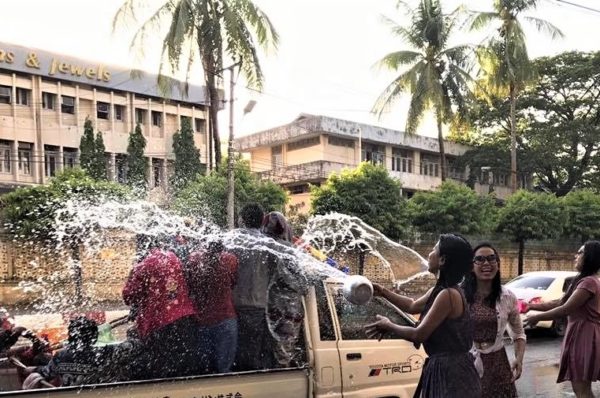The time difference with Europe is +04:30 in summer and +05:30 in winter.
There are currently no direct flights between Europe and Yangon. There is at least one stopover. The following airlines fly regularly to Burma:
| Thai | www.thaiairways.com |
| Bangkok Airways | www.bangkokair.com |
| Air Asia | www.airasia.com |
| Silk Air | www.silkair.com |
| Air China | www.airchina.com |
| Malaysia airline | www.malaysiaairlines.com |
| Vietnam Airline | www.vietnamairlines.com |
| Korean Airline | www.koreanair.com |
| Qatar Airways | www.qatarairways.com |
| Emirates | www.emirates.com |
| Thai Lion Air | www.lionairthai.com |
| Myanmar National Airlines | www.flymna.com |
| Etihad Airlines | www.etihad.com |
| Viet Jet Airline | www.vietjetair.com |
Myanmar (or Burma) is the only country in Southeast Asia that can boast such a wide diversity of geographical areas. Myanmar has mountains and glaciers to the north, a semi-desert region in the center, and tropical rainforests that descend to reach the white sand beaches bordering the Andaman Sea. Myanmar covers an area of 67,7000 km2 and is larger than France. It stretches over 936 km from east to west and more than 2,051 km from north to south. Myanmar is bordered by Bangladesh and India in the northwest and China in the northeast. Laos and Thailand are located to the southeast, and the Bay of Bengal lies to the south and west of Myanmar. The country is irrigated by the Irrawaddy, the principal and longest river, which originates in the Himalayas and flows into the Andaman Sea. It crosses the country from north to south and is divided into eight tributaries before reaching the sea, forming a fertile delta of 33,670 km2.
Burma is divided into four natural geographic regions. These are:
Most of Burma is in a tropical zone. It has three seasons: the monsoon, the cold season, and the dry season. The monsoon season begins in mid-May and ends in mid-October. Rainfall is abundant on the coast of Arakan and Taninnthayi and in the northern mountains, but there is very little rain in the center of the country where Bagan and Mandalay are located. The cool season begins in early November and ends in late February, and is considered the most pleasant season to visit the country. The temperature is very comfortable with bright, sunny days and cooler nights. In the mountains, it can get very cold after sunset. The hot/dry season is from March to mid-May. During this season, the temperature rises day after day until the rain returns. It can reach up to 42 degrees Celsius in the driest areas, as in Bagan and Mandalay.
Myanmar has a large number of forests with a rich variety of tree species. Many tropical fruits such as mangoes, jackfruit, mangosteen, banana, papaya and oranges grow in abundance. The famous teak wood is cultivated and is also found wild in the tropical forests. In the forests of Burma, there are elephants, tigers, rhinos, monkeys, hares, wild cats, wild pigs, and snakes. Dolphins and crocodiles can be found in the Irrawaddy river, and as many as 150 species of birds make their home along its shores.
Burma is composed of 135 different ethnic groups that are sub-groups of the the Kachin, Kayar, Kayin, Chin, Mon, Rakhine and Shan peoples. There are about 60 million people in Burma and approximately 70% of them are Burmese. The people of Burma belong to the Mongoloid group and come from three main branches: the Tibeto-Burman, the Mon-Khmer, and Thai-Chinese.
The national language is Myanmar. It is close to the Tibetan language in sound and grammar. The Burmese alphabet is derived from the Hindi alphabet, which has been in existence since the sixth century BC. In the Burmese alphabet, there are 33 consonants and 12 vowels. The consonants surround the vowels to become words.
The local currency is called “Kyat”, and it uses only notes, as coins have fallen into disuse over the last twenty years. The biggest note is 10,000 kyats, followed by notes of 5,000, 1,000, 500, 200, 100, and 50.
The country’s natural resources are very impressive. Tropical timber (such as teak and ironwood), gemstones (ruby, sapphire, jade, spinel, topaz), gold, silver, and minerals (coal, lead, tungsten, copper, and uranium) are abundant. Burma is also the eighth-largest producer of natural gas. Burma is essentially an agricultural country, as 64% of the population cultivate the land. The main income of the State comes from agriculture, fishing, gas, oil, and minerals. Individual income is very low. The majority of the population (with typical employment as small vendors or rickshaw drivers) earn approximately $5 per day. The middle class earns about $20 per day. Intellectuals and merchants earn a much better living.
The administrative capital has been Naypyidaw since 2006. Yangon, the largest economic center, is currently inhabited by about 7 million people. Mandalay is the second largest city, with about one and a half million inhabitants. It is also the commercial center of the northern part of the country.
The current is 220 volts, but it is not stable and power outages are frequent. In some villages in the countryside, there is no electricity at all. These areas are illuminated with battery-powered lamps, oil lamps, or by candlelight. In general, hotels are equipped with generators.
People normally eat three meals a day, but the Burmese love to snack. That’s why you’ll find them eating in small cafes and tea houses throughout the day. The Burmese drink tea with condensed milk. Fish soup with pasta (Mohingha), and coconut-milk soup with noodles are dishes commonly served for breakfast. The staple food is rice, which is typically eaten with meat and mixed vegetable curries. Curry is made with onion, garlic, and tomatoes. The most-consumed meats are chicken, pork, fish and shrimp. Palm sugar and tea, and salad with peanuts and sesame seeds are eaten as a dessert. In markets, there are always plenty of fruits and various vegetables available in abundance.
The national sport is soccer, and most Burmese people are passionate about football. However, one of the most popular sports to play and the one that is most typical of the country is called Chinlon. The Chinlon is a ball made of rattan. It takes at least three people to play. Players form a circle and pass the ball, trying to keep it up with all parts of the body except the hands. Tennis and billiards are also popular, while golf is reserved especially for executives and some of the more affluent population.
Religious and traditional festivals correspond to the Burmese lunar calendar, which begins in the month of April.
There were twelve festivals celebrated for the twelve months of the year in the days of the Burmese kings, but some are no longer celebrated today.
These are the most famous festivals in Burma, which deserve a trip. If you want to attend, please contact us to get the exact dates.



The Nagas are one of 135 ethnic groups in Myanmar, who live in an isolated area surrounded by mountains near the border of India. They cultivate the land and live in a primitive way. Once a year, they gather to celebrate their New Year and make offerings for a good crop for the next season. During their celebration, the Naga play music, sing, and dance in traditional costumes. For the last several years, foreigners have been permitted to attend this festival, but must obtain a special permit.
This is one of the most famous festivals of the Shan State. The Pindaya region is inhabited by ethnic Danu, Taungyo, PaO, and Shan. During the week of celebration, entertainment is plentiful and vendors from across the country come to sell their products. Ethnic groups from throughout the region arrive with their oxcarts to participate in the festival and to buy and sell their wares.
Mount Popa is a sacred place dedicated to the Nats (the guardian spirits). During the festival, the mediums are possessed by the Nats, and they sing and dance with loud music.
The most popular festival of spirits in the country. This festival is held for a week near Mandalay (one-hour drive) in TaungByone village. This festival is celebrated to honor the Nats of two brothers, who were executed on the site in the 11th century. The faithful from across the country come to honor them so that their wishes are granted. It is a very joyful, active, and noisy festival accompanied by loud music.
The elephant dance competition is held in the city of Kyauk Se, near Mandalay. Life-size elephants are made of fabric and paper. The whole city participates in the festival, which lasts for three days. Two men hidden under the elephants dance, accompanied by music. A contest is held to reward the best-decorated elephant which has performed the best dance.
This festival is celebrated on the day of the full moon in the eighth month of the Burmese year. Pagodas and houses are decorated with candles and lamps of all colors. Weaving competitions are held in the courts of the Shwedagon Pagoda at night.